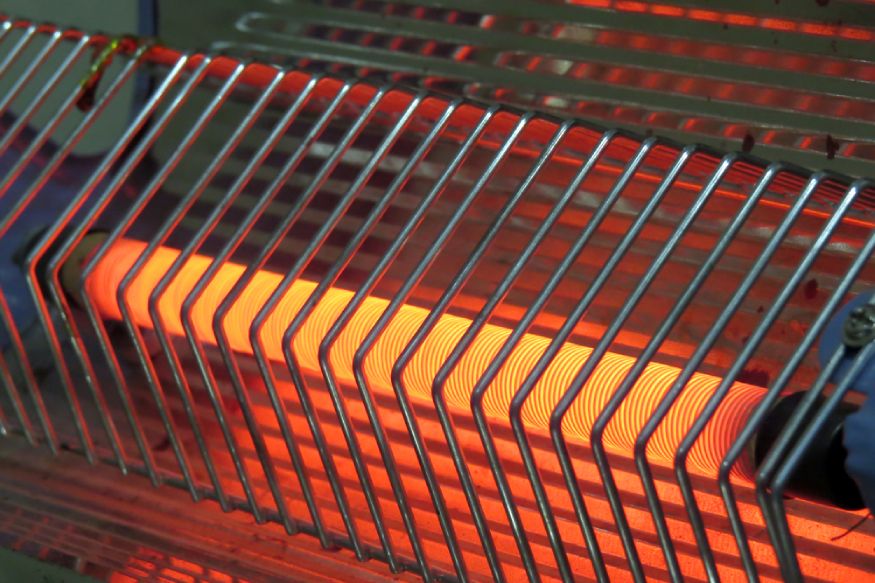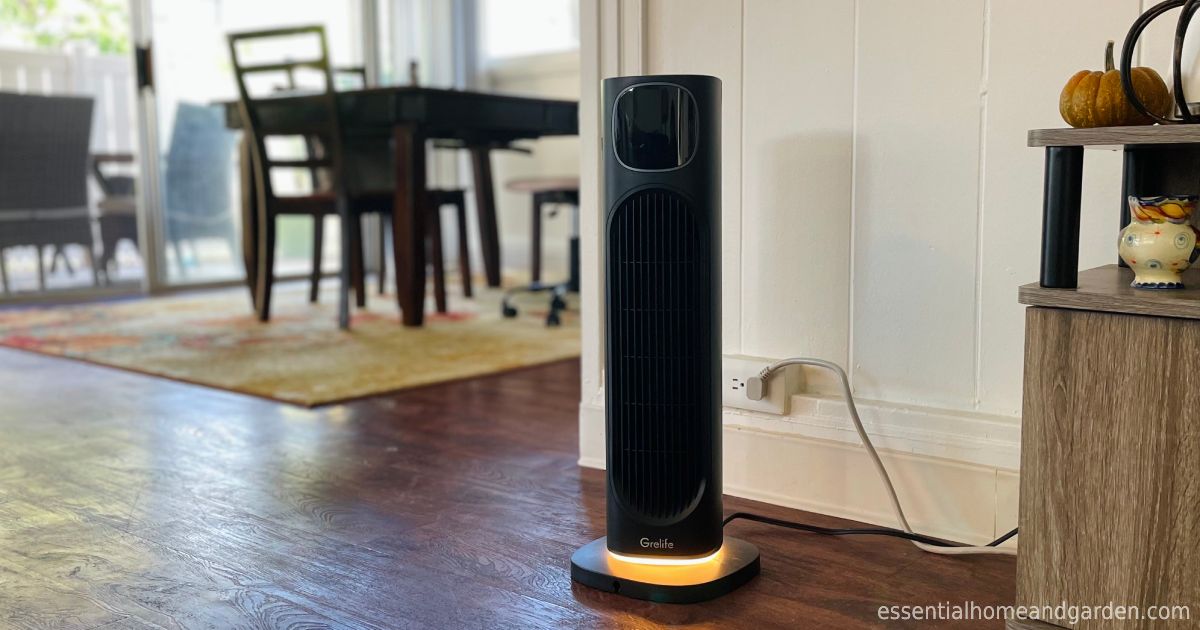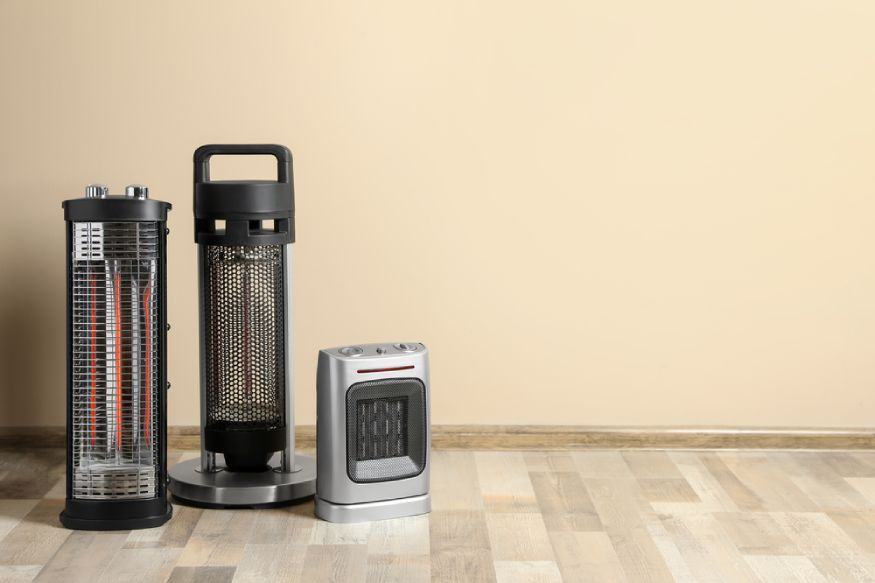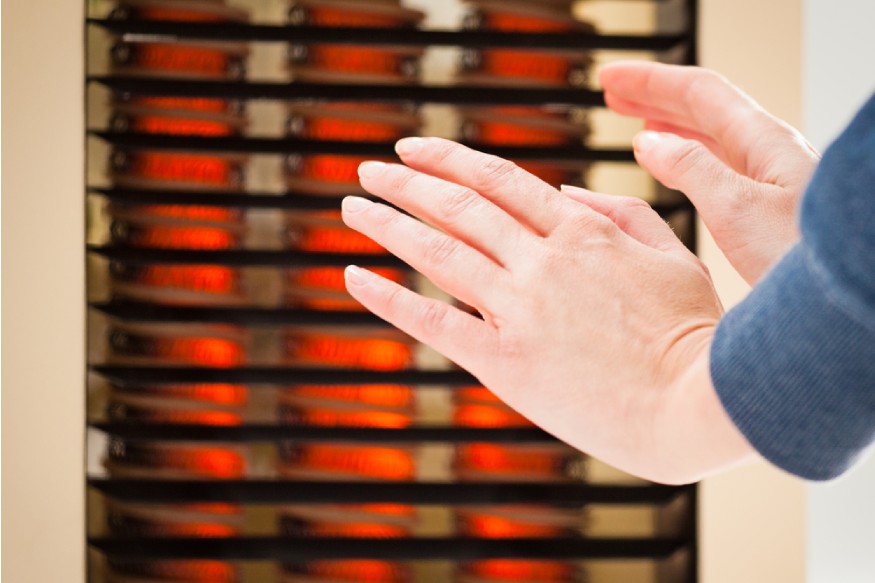PTC heaters come with a lot of promises about being more efficient, safer, and more effective. For these reasons, many space heater manufacturers are switching to PTC elements.
Despite their growing popularity, most consumers don’t know what a PTC heating element is. More importantly, most don’t understand what makes these heaters more efficient and safer than other options.
A positive temperature coefficient (PTC) heater element uses conductive material with a high positive temperature coefficient to turn electricity into heat. Unlike traditional heaters, these elements exhibit strong self-limiting temperature control since the electrical resistance within the element increases as temperature increases.
This simple trait gives PTC heaters a major advantage over coil and wire heating elements. We’ll look at why this is, the different types of PTC heaters available, and their many benefits, below.
PTC Heaters vs. Traditional Heaters
Like traditional electric space heaters, PTC space heaters turn electricity into heat. Both types use fans or convection to move this heat into the environment and come with multiple heat and mode settings.
The difference between these types is in how they behave as their surface temperature increases. To understand these differences, we need to take an in-depth look at how both of these products work.
How Does a Traditional Heating Element Work?

Most traditional space heaters use conductive wires or coils to turn electrical currents into thermal energy. Nichrome wire is the most common type of wire element used today.
Nichrome, like other conductive wires, has a positive temperature coefficient. But unlike PTC elements, the current is not slowed enough at high temperatures to stop the wire from getting dangerously hot.
To keep from overheating and potentially causing a fire, these types of heaters come with electrical safety switches. Sensors inside the unit track the internal temperature and cut power to the heating element if it becomes too hot.
As long as these sensors and the associated switches are working properly, this system is very safe. However, if a sensor or switch were to malfunction, there would be nothing to stop the unit from overheating.
Note: Even when these types of heaters are working correctly, the temperature on the surface of the element can get close to 1,000 degrees Fahrenheit.
Traditional electric heaters heat up slowly, requiring more and more energy to increase the temperature of the element as time goes on. When the electrical sensors sense that the maximum temperature or set temperature is reached, the current is cut off or restricted and the element begins to cool. When the temperature falls below the threshold, the element will begin to reheat all over again.
For this reason, traditional heaters are far less effective than PTC heaters.
How Does a PTC Heating Element Work?

PTC heating elements also turn electrical current into thermal energy. But they possess a positive temperature coefficient that is strong enough to be self-limiting. This means that, as the element heats up, it becomes less receptive to current, which causes the temperature to decrease.
PTC heating elements can be made of a variety of materials. For many applications, they consist of conductive inks printed on flexible fabric. PTC elements in space heaters generally consist of high barium titanate ceramic disks.
These disks can be manufactured to max out at different temperatures depending on need. For home-use space heaters, the ceramic is typically manufactured to reach a maximum temperature of around 500 degrees.
Because PTC heater elements are self-limiting, they do not require extra sensors or switches. Instead, the heating element itself acts to limit heat output. As the temperature of the element rises, the current moving through the element is slowed at a proportional rate.
In other words, PTC heaters allow current to flow when the surface and ambient temperatures are low, and restrict current flow when the surface and ambient temperatures are high.
Once the maximum temperature has been achieved, a PTC element will maintain that consistent temperature using minimal electricity until the ambient temperature changes.
Note: If the element fails or is damaged in some way, it will stop moving current altogether. This means that even a malfunctioning PTC heater element cannot overheat.
During normal operation, a PTC heater will draw full power the moment it is turned on. As the temperature of the element rises, power consumption will decrease until it reaches a low steady state as the element reaches max temperature. This results in a high amount of power usage initially, but low overall power usage.
Not only does this mean that PTC heaters are more energy efficient, but they also produce heat faster than traditional electrical heating elements.
Types of PTC Heaters

PTC heating elements come in a huge variety of types. Because they run open-loop, do not require external control, and can be applied to flexible fabrics, there are endless possibilities for their use.
The seat and steering wheel heaters in your car are made of PTC conductive ink. As is that fancy heated lining in your puffer jacket. PTC heating elements are also widely used in the medical industry to keep patients comfortable during surgery and recovery.
In terms of space heaters, PTC heating elements come in two main types: aluminum fin and honeycomb.
Aluminum Fin Heaters
Aluminum fin heaters combine a PTC ceramic block with conductive aluminum fins to help spread the heat throughout the room.
Current passes through the ceramic, causing it to heat up. The heat is then transferred to the highly conductive aluminum fins. These fins can transfer heat to the air through convection or they can be used with an internal fan to push air over them and out into the room.
Like all PTC heating elements, these types are self-limiting and require no electrical sensors to avoid overheating. They can be manufactured to have multiple temperature maximums for use with target temperatures and multi-heat settings. Alternatively, a single maximum temperature point can be written into the ceramic block while multiple fan speeds allow for different heat outputs.
Honeycomb Heaters
Honeycomb heating elements are made up of PTC ceramic disks with hundreds of tiny holes bored through them. These holes allow air to pass directly through the heating elements. When paired with an internal fan, these units are highly effective at moving hot air from the heater into the room.
These PTC heaters are also self-limiting and very safe. As with aluminum fin heaters, they can be manufactured to have multiple temperature maximums to allow for multiple heat settings and target temperature settings. Or they can simply work with multiple fan settings to move heat into the room at different rates.
Benefits of PTC Heating Elements

The self-limiting nature of PTC heaters gives them a lot of benefits beyond even what we already mentioned above. These benefits range from them being much safer to operate to their manufacture having a lower environmental impact.
Some of the most important benefits of PTC heaters include:
- Safer to Operate: PTC heaters operate at half the maximum temperature as traditional units.
- Will Not Overheat: The self-limiting physics of these ceramic disks means they don’t rely on external sensors or switches to avoid overheating.
- Lower Power Consumption: As the element gets hotter, less power is used, making these units far more energy efficient.
- Fail to Cold: If a PTC element is broken or damaged, the electrical current will stop flowing and the element will go cold.
- Balanced Heating: The current flows through the entire element at the same rate which avoids dangerous hot spots and inefficient uneven heating.
- Last Longer: Because the element stays cooler, heater components are less stressed and last longer than those in traditional heaters.
- Heat Quickly: Full power draw is used upfront to quickly and effectively heat the element for more warmth much faster.
- Lower Environmental Impact: PTC elements are created without acid washes or the other environmentally unfriendly processes needed to create wire and coil elements.
With so many benefits over traditional electric heater elements, it’s no wonder more and more manufacturers are using PTC elements in their space heaters. These products, like the Grelife 24-inch Space Heater, are far safer for use in the home. Plus, they heat more effectively and use less energy than their conventional counterparts.